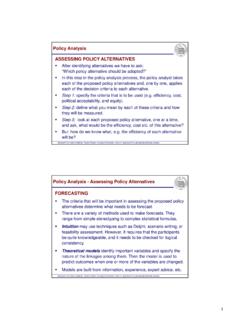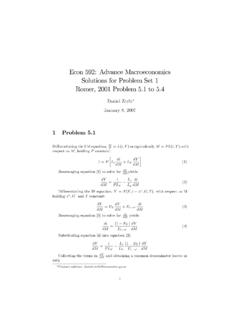Transcription of The Political Economy of Growth in Ethiopia
1 The Political Economy of Growth in Ethiopia Chapter 4 of volume 2 Alemayehu Geda1 We are pleased to tell you that we have finally submitted the Growth Project manuscripts to Cambridge University Press. Cambridge will publish the project as two books: volume 1 will synthesisize the project, and volume 2 will contain the country studies. We anticipate publication in 2007 (late 2006 if lucky). The titles and editors will be follows: The Political Economy of Economic Growth in Africa, 1960-2000 Benno Ndulu, Stephen O'Connell, Robert Bates, Paul Collier and Charles Soludo, editors The Political Economy of Economic Growth in Africa, 1960-2000: Country Case Studies Benno Ndulu, Stephen O'Connell, Jean-Paul Azam, Robert Bates, Augustin Fosu, Jan Willem Gunning and Dominique Njinkeu, editors 1 Associate Professor and Head, Department of Economics, Addis Ababa University.
2 I would like to thank Abebe Shimless, Daniel Zerfu, and Steve O Connell for their assistance and comments. I would also advise readers to refer to Alemayehu with Befekadu (2005) which has more details than this version. It can be accessed from my page at: . Ethiopia Chapter 4 Table of Contents 1. 2. Growth experience in cross-country Historical background and policy episodes, 1960-2000 ..2 The Imperial Regime: 1930-1974 ..2 The Derg Regime: 1974-1991 ..3 The EPRDF Regime: 1991 to date ..3 Determinants and sources of Growth ..3 3. Markets, institutions, agents, and the Political Economy of Growth ..8 The Political Economy of Institutions, markets and policy in the Growth process ..11 Markets and the Growth process.
3 14 The product and the land The labour Behavior of economic agents and the Growth process ..15 4. Conclusion ..18 References ..20 Appendix I: A Model of Constraints on Rural Microeconomic Tables ..4 Figures ..12 Ethiopia Chapter 4 List of Tables Table 1: The Collins and Bosworth Growth accounting based decomposition of source of Growth for Ethiopia Table 2: Hoeffler s augmented Solow model (SYS-GMM Estimates): decomposition for Ethiopia Table 3: Ndulu and O Connell pooled conditional model based results for Ethiopia Table 4: Tobit estimates (dependent variable: output) Table 5: Results: the general model of the manufacturing sector Table 6: Growth accounting in the manufacturing sectorEthiopia Chapter 4 List of Figures Figure 1: Inflation in Ethiopia 1967-99 (percentage change over previous year) Figure 2: Defense expenditure and external shock Figure 3.
4 Political risk and per capita income Growth (1984-2000) Ethiopia Chapter 4 page 1 1. Introduction With a population of over 70 million in 2005, Ethiopia is the second most populous country in Africa. Its history as a Political entity stretches back to antiquity, and almost uniquely within Sub-Saharan Africa, it has never been colonized. Yet Ethiopia is one of the poorest countries in the world. Rainfall and commodity prices have a major influence on year-to-year Growth , but I argue in this chapter that the detrimental impact of these exogenous factors has been accentuated by a policy environment that has reflected the narrow and shifting influences of politically dominant interest groups.
5 At the microeconomic level, investment behavior has reflected the pervasive influence of both exogenous and policy-generated risks to income and property. In the aggregate, poverty and slow Growth have reproduced themselves over time. Each reflects the joint influence of structural vulnerabilities and weaknesses in governance. Against this background, key public-sector institutions have provided a critical minimum level of policy continuity in Ethiopia . In their absence, the impact of a volatile Political Economy on Growth would have been even greater. The literature on Ethiopia s long-run economic Growth is limited. Useful but largely descriptive macroeconomic reviews appear in Eshetu and Mekonnen (1992) for 1974-1990, the papers edited by Alemayehu and Berhanu (1999) for 1991-1999, and MEDaC (1999), EEA (2000) and Berhanu and Seid (1999).
6 Comprehensive empirical studies of the Growth process are limited to those of Netsante (1997) and Seyoum (1997), who estimate augmented Solow Growth models; and Seid (2000).2 Physical capital fails to have a strong impact on Growth in all three of these studies. Results for human capital are less conclusive, suggesting problems of data and method: thus Netsante finds a substantial contribution of education to Growth , but Seyoum and Seid do not. The present study differs from these in several ways. It constructs a detailed and empirical and analytical narrative of the Growth record, and emphasizes Political Economy factors, the role of institutions, and the behavior of microeconomic agents.
7 It also benchmarks Ethiopia s Growth performance against that of all other developing countries. I begin in Section 2 by placing Growth in Ethiopia in its politico-economic and historical contexts. I distinguish three successive policy regimes in the post-1960 period and use Growth accounting and cross-country econometrics to characterize the Growth record across these regimes. Section 3 turns to explanation; I examine the nature of product and factor markets, the roles of institutions and Political Economy , and the behavior of microeconomic agents. I argue that Growth in Ethiopia is largely determined by Political Economy factors, climatic risks, the strength and efficiency of institutions, the quality of public policies, and risks related to war and property rights.
8 Product and input markets are found to be not only thin but inflexible. Combined with the unstable Political environment, this has greatly limited both the potential for long-run Growth and the sustainability of individual Growth episodes. At the same time, the analysis suggests a potentially powerful role for Ethiopia s long and unique history, operating through the continuity provided by a few key public sector institutions. In the absence of such continuity and notwithstanding the manifest inefficiencies of 2 These three papers are graduate research papers from the Department of Economics, Addis Ababa University. Ethiopia Chapter 4 page 2 these institutions in other respects the Growth record may well have been worse than observed.
9 Section 4 concludes the chapter. 2. Growth experience in cross-country perspective Historical background and policy episodes, 1960-2000 Ethiopia s modern history reflects the institutional legacy of centuries of internal conflict and external threat. Internally, religion, regional location, ethnicity, and nationality have each, at various times and in varying combinations, served as focal points in the contest for power and control over economic resources. Land remains an economically critical and politically contested resource, reflecting the age-old antagonism between a landed aristocracy (including the church, a major presence since the 4th century) and the peasantry (Addis 1975; Gebru 1995).
10 Externally, although the country was never colonized, hostile and powerful colonial forces encircled it from the last quarter of the 19th century and rendered its independence a besieged one. The country fought three times with the Egyptians, four times with the Dervishes, five times with the Italians and once with the British in the period from 1868 to 1896 (Bahru 2001; Pankhurst 1963b). As a result, Ethiopia developed as a militaristic state3 with an Economy dependent on the export of primary commodities and the import of manufactures, especially weapons. The acquisition of firearms from nearby European powers by Ethiopia s regional lords also shaped the pattern of internal conflict and the regional balance of power.
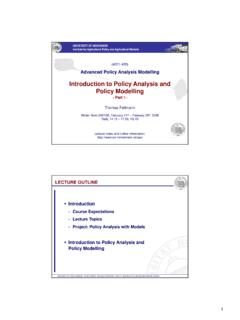
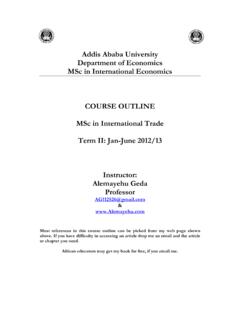
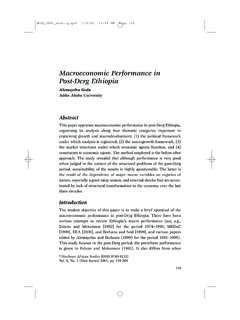
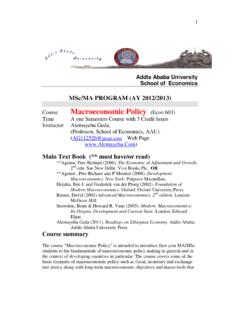
![Curriculum Vitae [1-April-97] - ::: …](/cache/preview/8/3/8/4/2/2/5/2/thumb-8384225265b34eac0963e7f7ecd24ea6.jpg)
